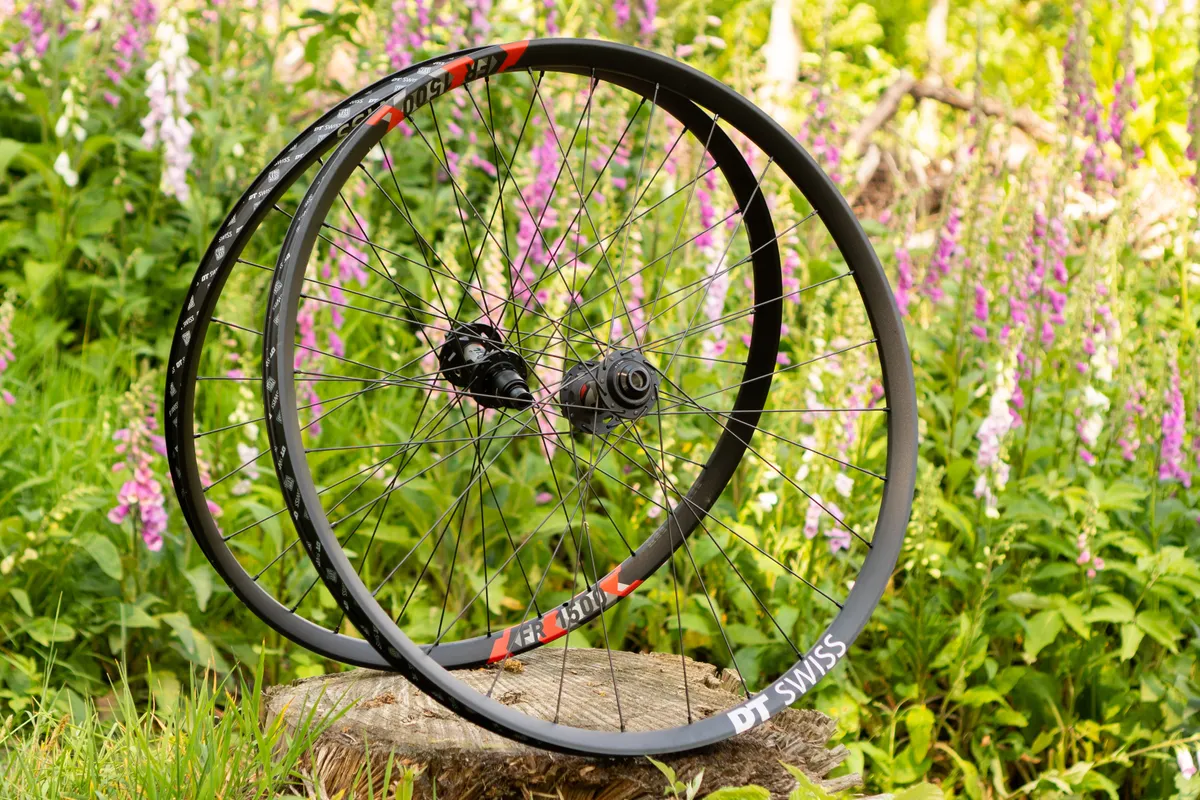Vincent Tupin’s recent video, where the stylish French freerider sent the biggest drop recorded in mountain biking history, certainly raised an eyebrow or two.
Measuring a whopping 31.3 metres out and 25 metres down, the cliffside drop in Switzerland’s Valais region redefined what’s possible on a bike, even if [spoiler alert] he didn't stick the landing.
Watching Vinny T’s video is a heart-in-mouth experience regardless of whether you know the guy, but as a friend I was left asking the question “is it worth it, mate?”.
Clearly, the answer to that question is nuanced.
As an outsider looking on from the safe side of my screen, the prospect of jumping me and my bike off a full-on cliff is far from appealing.
But Vinny T is lucid, intelligent, and above all, calculated.
Yes, his riding style looks chaotic and seriously expressive, but beneath the flair is intent and conviction; there has to be for him to send it off a jump that size or slash his way down a tree-lined gulley at over 40 kilometres per hour.
Without believing in himself and his abilities, you can be damn sure he wouldn’t have got as far as he has.
Whether that’s enough to justify his actions in my opinion or yours doesn’t really matter – it’s his choice to go out there and push the boundaries of the sport. If it wasn't him, it would be someone else.
I, for one, am grateful Vinny is raising the bar.
Man versus machine

But what of his kit?
While his bikes usually hold up well – or at least long enough for him to create an intense two-to-five-minute shredit – the Scott Gambler he rode off that cliff didn't survive unscathed.
Slow the video down to analyse each frame and you'll see that on the face of it the bike's frame looks fine, as does a large portion of the kit.
But the tyre clearly explodes off the front wheel, and in turn, the front wheel crumples under the massive force of the landing. Because the tyre couldn’t withstand the impact of the drop, it blew off the rim, in turn compromising the front wheel.
In a classic chain reaction of events, that was only because the fork bottomed out so heavily, transferring all that force – rather than absorbing it – into the tyre.
So, if you were one of the engineers behind one of the many components on Vinny’s bike, what would you be thinking?
Beyond the worry and apprehension, probably a host of things, such as 'is the Finite Element Analysis (FEA) we did on the bike, wheels, suspension, bars, cranks… watertight?'; 'how much extra force is the landing of this drop going to put through the kit over and above the tested limits?'; 'which bits of the bike are going to be the weakest links?'; 'should we have modified the suspension, frame or tyres for this boundary-pushing feat?'. The list goes on.
Maybe all of this seems irrelevant, but there are plenty of positive real-word implications of Tupin's cliff drop.
The biggest benefit is stronger, more reliable bikes and components. If a bike can survive that, it’ll be able to comfortably handle a trickle down a blue, red or black trail – or last for years without breaking.
Of course, without proper maintenance, anything will break. But stay on top of fettling your bike’s bits, and if you’re an average rider like me, it’s going to last a long time.
While Vinny T’s pushing the envelope on the freeride scene, it’s the same story at the sharp end of racing.
Faster equals smoother?

At the races, there’s plenty of smashed-up kit; the riders are pushing their bodies and bikes into unknown territory and speeds on every run, albeit in a different way from freeriders.
Famously – and most recently – Bernard Kerr's bike-breaking antics were caught on camera. He snapped his prototype Pivot Phoenix at Crankworx Rotorua when he tagged the landing of a triple.
Pivot went out of its way to investigate, finally pinpointing the cause of the failure as improperly bonded tubes.
You can guarantee they won't do that again – which is awesome news for the humble consumer – even if the live-broadcast lesson was a hard one to swallow.

Roger Vieira snapped the head tube clean off his GT Fury at the Val Di Sole round of the World Cup in 2023, and at the same venue in 2017 Greg Minnaar clouted a track-side post with his V10’s frame, snapping it clean in two.
These riders won't be the last and they're certainly not the first to write off their bikes. It's to be expected, whether that's in the name of development, speed, or just riding as hard as they do.
We shouldn't be shocked when we see a snapped bike at the races. Yes, it's unusual at your local trail centre, but that's exactly the point.
Without the pros destroying their bikes, we wouldn't be able to ride ours day after day without issue.

And racers destroy wheels, too, at a shocking frequency – as high as one per run at some of the rougher races, such as Fort William.
So thrilled are brands when their £900 set of wheels lasts one entire World Cup weekend, they make a point of it in their marketing material.
Harry Molloy explains about DT Swiss’s FR 1500 on the brand's website: “…we all used the same wheels [FR 1500] throughout the event… [but] a couple of them could now do with a rim swap…”
While Harry’s statement might sound damning, it means these things are going to be monstrously strong for regular riders.
World Cup riders are going so fast and hitting rocks, roots, bumps, jumps and everything else with enormous forces that a set of wheels lasting that long is a genuine achievement.
But is stronger, more reliable kit all this racing and development amounts to? Clearly not.
High-tech specs

More important is all the development, tweaking, customisation and research on what makes a bike feel good and ride well.
That could be countless hours with a development mule, as per Canyon’s latest Sender Frankenbike test rig, or mechanics chopping bits of their riders' frames out to make them feel smoother and flex more, or adding bits to make them stiffer.
That’s where the painstaking hours on the race track matter for the average rider.

Bikes that are notoriously stiff get modified to feel smoother so pro racers can ride harder. This on-the-fly development flows into the next iteration of that model, creating a bike that’s better to ride for we mere mortals.
Wheels get built with intentionally de-tensioned spokes to quieten down trail chatter, and this filters down to the consumer models. Rims are made ‘softer’ and spoke tension lowered.

Suspension is pushed to the limit, and off the back of it innovative products get released.
Fox’s new Podium and RockShox’s Charger 3.1 are great examples of that; each brand’s forks and dampers have been developed using feedback from the race track, culminating in tangible performance benefits.
Where’s all this heading?

It’s unlikely people like you and me are going to be sending it off Vinny T-sized cliffs or hurtling down World Cup tracks at pro-level speed any time soon, even if our equipment is capable of doing it.
But we are getting virtually unfettered access to all that bike and component development, improvement and research in a refined, easy-to-use product that lasts way longer than ever before.
Yes, there will be some casualties on the way – whether that’s bikes or broken bones – but that’s the same in any field where there’s innovation, and is particularly true of extreme sports such as mountain biking.
I won’t lie and say I enjoy watching people such as Vinny T risk it all to push the boundaries of what’s possible, but I’m grateful they do.




